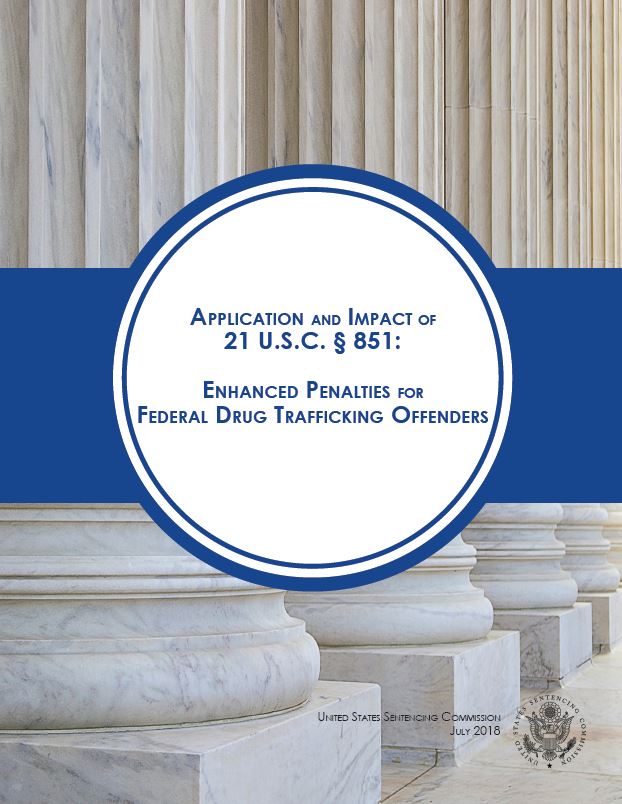Summary

Using fiscal year 2016 data, this publication provides comparisons between all offenders who appeared eligible for an 851 enhancement, offenders for whom an 851 information was filed, offenders for whom an 851 information was filed and later withdrawn, and offenders who remained subject to the 851 enhancement at sentencing. The analysis builds on the Commission's 2011 report to Congress, in which the Commission recommended that Congress reassess the severity and scope of 851 enhancements.
Other Related Materials:
- Quick Facts on Mandatory Minimum Penalties (FY17 Data)
- Related Reports:
Key Findings
-
Cases in which an 851 enhancement applied are rare.
- The government filed an 851 information against 757 drug trafficking offenders, which represents just 12.3 percent of 6,153 offenders eligible for an 851 enhancement in fiscal year 2016.
- The number of offenders is even smaller after considering cases in which the government withdrew the 851 information or made a motion for substantial assistance relief. There were only 583 cases in which the 851 information was not withdrawn by the time of sentencing, and only 243 offenders (3.9% of eligible offenders) who ultimately remained subject to an enhanced mandatory minimum penalty.
-
The 851 enhancements were applied inconsistently, with wide geographic variations in the filing, withdrawal, and ultimate application of the 851 enhancements for eligible drug trafficking offenders.
- In the majority of districts in fiscal year 2016, at least one-quarter of all drug trafficking offenders were eligible for an 851 enhancement.
- There was, however, significant variation in the extent to which the enhanced penalties were sought against eligible offenders, ranging from five districts in which an 851 enhancement was sought against more than 50 percent of eligible drug trafficking offenders to 19 districts in which the enhancement was not sought against any of the eligible offenders.
- Districts also varied significantly in the rate at which an 851 information was filed and later withdrawn. Several of the districts with the highest rates of filing an 851 information also had among the lowest rates of withdrawal. Conversely, some districts have higher rates of withdrawal even where they appear to be more selective in filing an 851 information.
-
The 851 enhancements resulted in longer sentences for the relatively few drug offenders to which they apply.
- In fiscal year 2016, offenders against whom an 851 information was filed received an average sentence that was over five years longer (61 months) than eligible offenders against whom the information was not filed (147 months compared to 86 months).
- Offenders who remained subject to an enhanced mandatory minimum penalty at sentencing had average sentences of nearly 19 years (225 months), approximately ten years longer than the average sentence for offenders who received relief from an enhanced mandatory minimum penalty (107 months) and nearly 12 years longer than the average sentence for eligible offenders against whom the information was not filed (86 months).
-
While 851 enhancements had a significant impact on all racial groups, Black offenders were impacted most significantly.
- Black offenders comprised the largest proportion of drug trafficking offenders (42.2%) eligible for an 851 enhancement in fiscal year 2016.
- Black offenders constituted the majority (51.2%) of offenders against whom the government filed an information seeking an 851 enhancement, followed by White offenders (24.3%), Hispanic offenders (22.5%), and Other Race offenders (2.0%).
- Such an information was filed against nearly 15 percent (14.9%) of Black offenders who were eligible to receive an 851 enhancement. This rate was higher than the rates for White offenders (11.4%), Other Race offenders (11.7%), and Hispanic offenders (9.4%).
- The prevalence of Black offenders was even more pronounced for offenders who remained subject to an enhanced mandatory minimum penalty at sentencing, with Black offenders representing 57.9 percent of such offenders.
